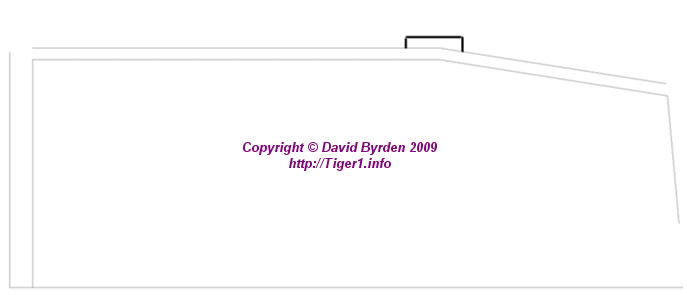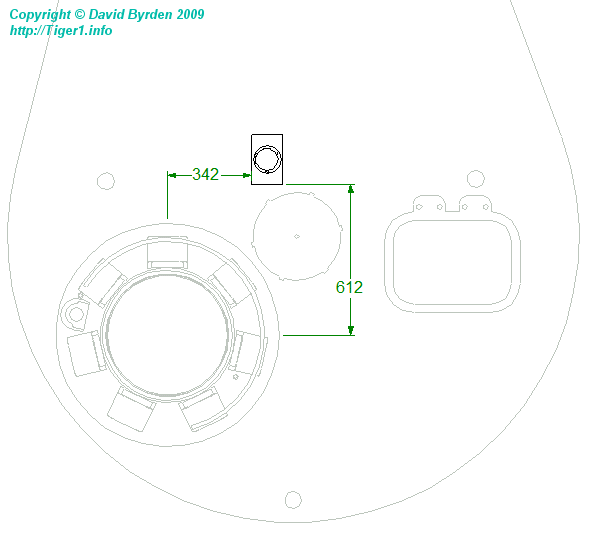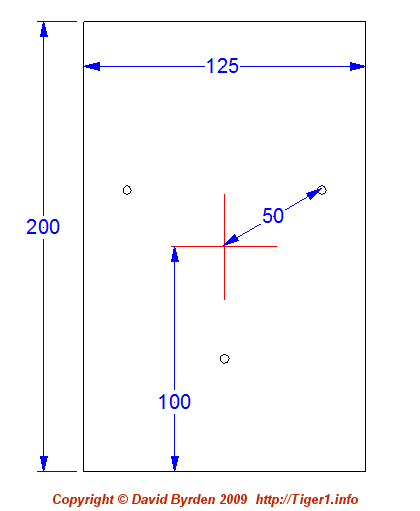About this detail of the Tiger
A simple navigational compass ('Orterkompass') was designed into certain German mid-war tanks. A factory drawing dated June 1944 [1] shows it on the Tiger E, though there are no known photographs of the compass (or its base) on the vehicle.
The OK 38 compass was similar to those already used in aircraft. It incorporated magnetic field correctors to compensate for the magnetic field of the vehicle (which was mostly made of steel). The compass was placed on the outside top of the turret, possibly to reduce the influence of the vehicle's magnetic field. This required a crewman to expose himself while using it, suggesting that it was not for use in combat.

The base was a piece of sheet metal welded to the turret roof. This diagram shows a profile of the base as designed for the Tiger. The base was bent so as to hold the compass several centimeters clear of the steel roof plate, possibly to reduce magnetic interference.

This plan of the Tiger's turret shows the designed location of the base on the Tiger. The dimensions drawn in green are known from the German factory drawing [1] .

This diagram shows three holes in the top of the sheet-metal base. A quick-release holder made of Bakelite was screwed into these holes. The holder incorporated the magnetic compensators, and for their correct operation it would have been necessary to keep the holder permanently on the roof. The compass itself could be easily inserted and removed from the holder, and stored inside the tank without ill effect.
The holder incorporated two mechanisms to compensate for the magnetic field of the tank. Because of the difficulty of measuring a magnetic field, it was treated as two combined fields; one permanent field embedded in the steel of the vehicle, and one transient field caused by induction from the Earth's magnetic field. This latter field would change over hours or days as the vehicle was moved.
Firstly, an array of permanent magnets was built into the base of the holder and could be adjusted via screws on the front and the left side. This was used to cancel the tank's permanent magnetic field. It must have been necessary to align the whole tank, or at least the turret, in two or more compass directions while setting these screws.
Secondly, two soft iron blocks were mounted in 'ears' at the top of the holder, bracketing the compass. These blocks would naturally acquire the same induced field as the tank. By loosening their screws and rotating them 180 degrees you could reverse their field and cancel the tank's induced field. They would then begin to slowly lose their effectiveness, so the most logical procedure would be to rotate them immediately before and after use of the compass.
A screwdriver was stored in the compass holder to help with these adjustments.
[1] Factory drawing 2AKF31861U1B11: Turmgehause (overall turret armour)